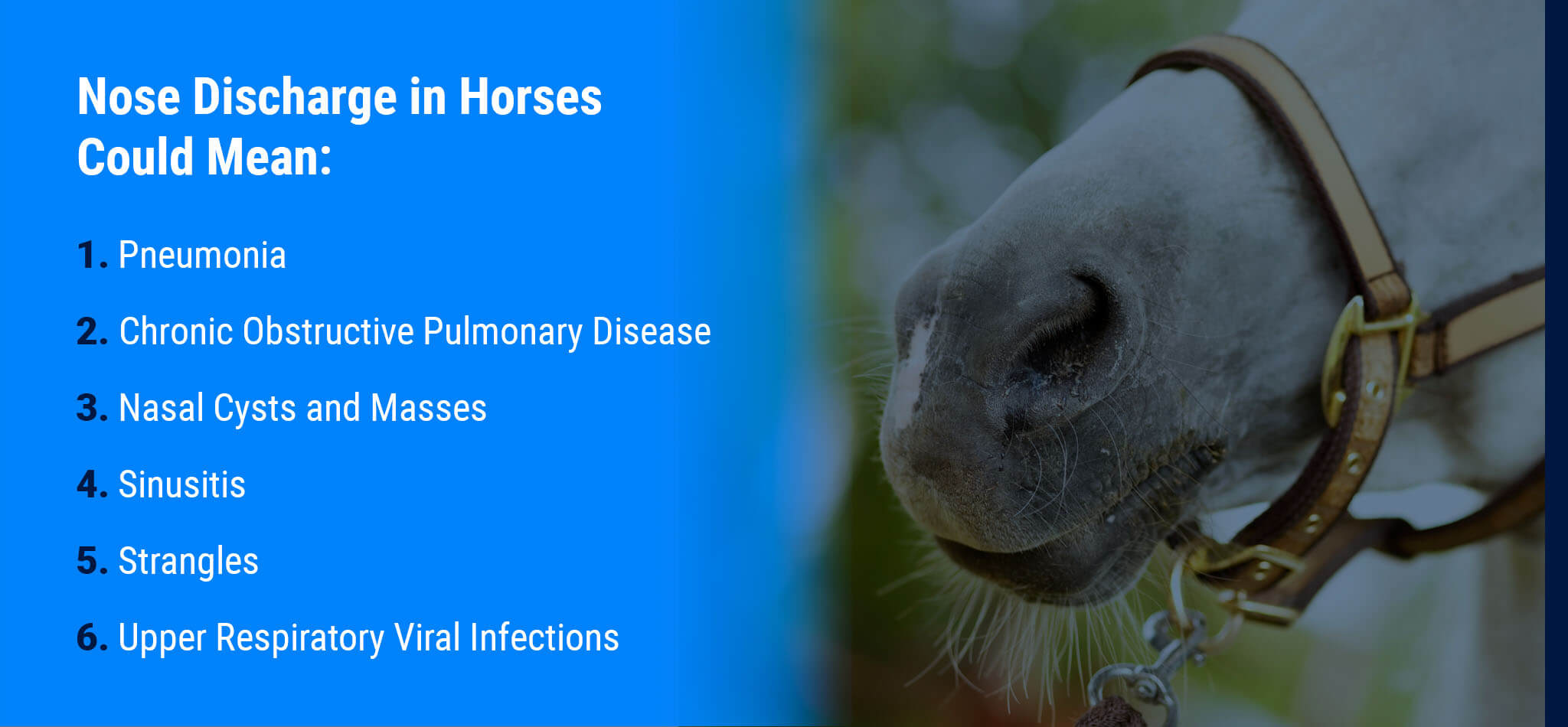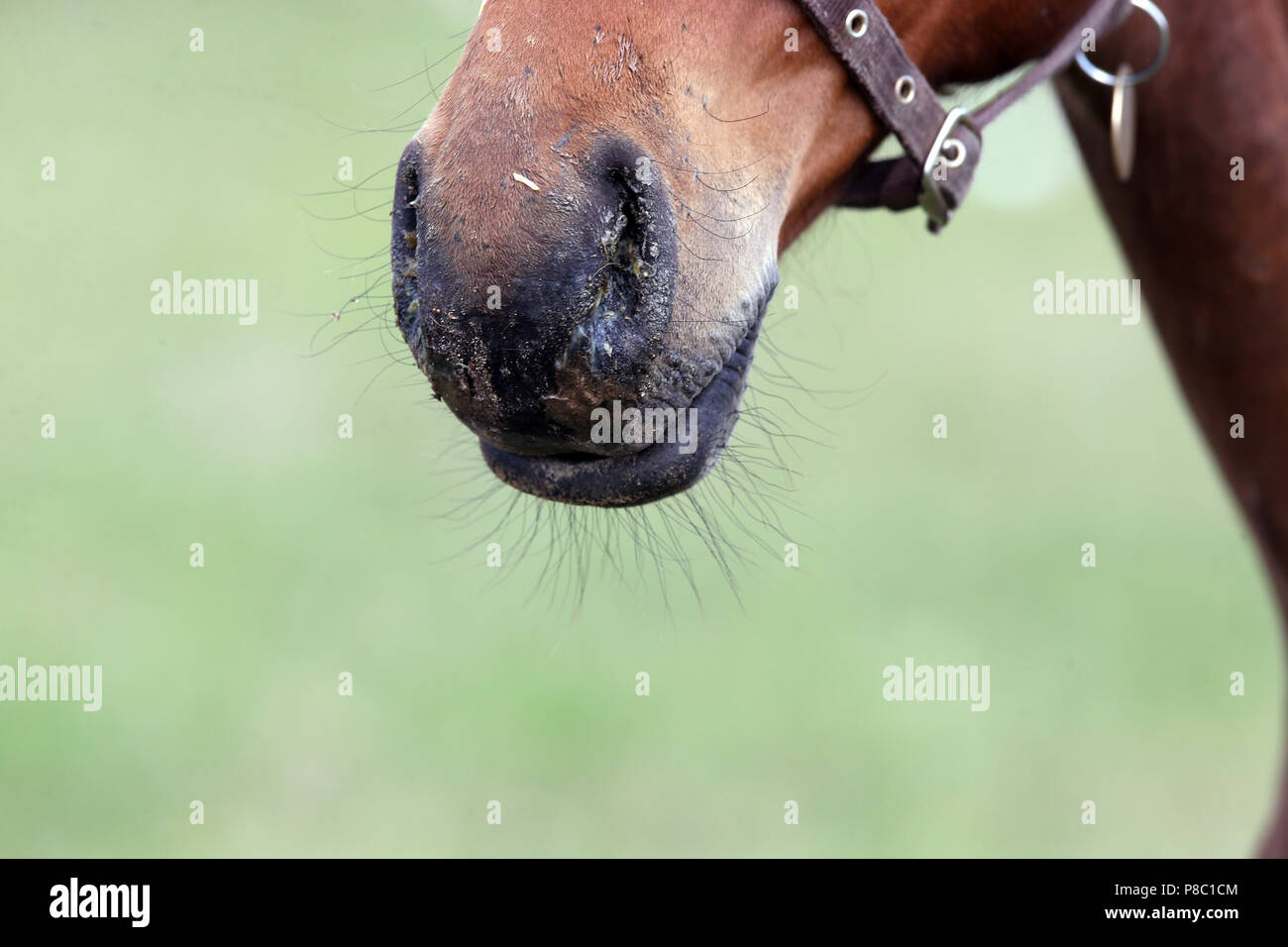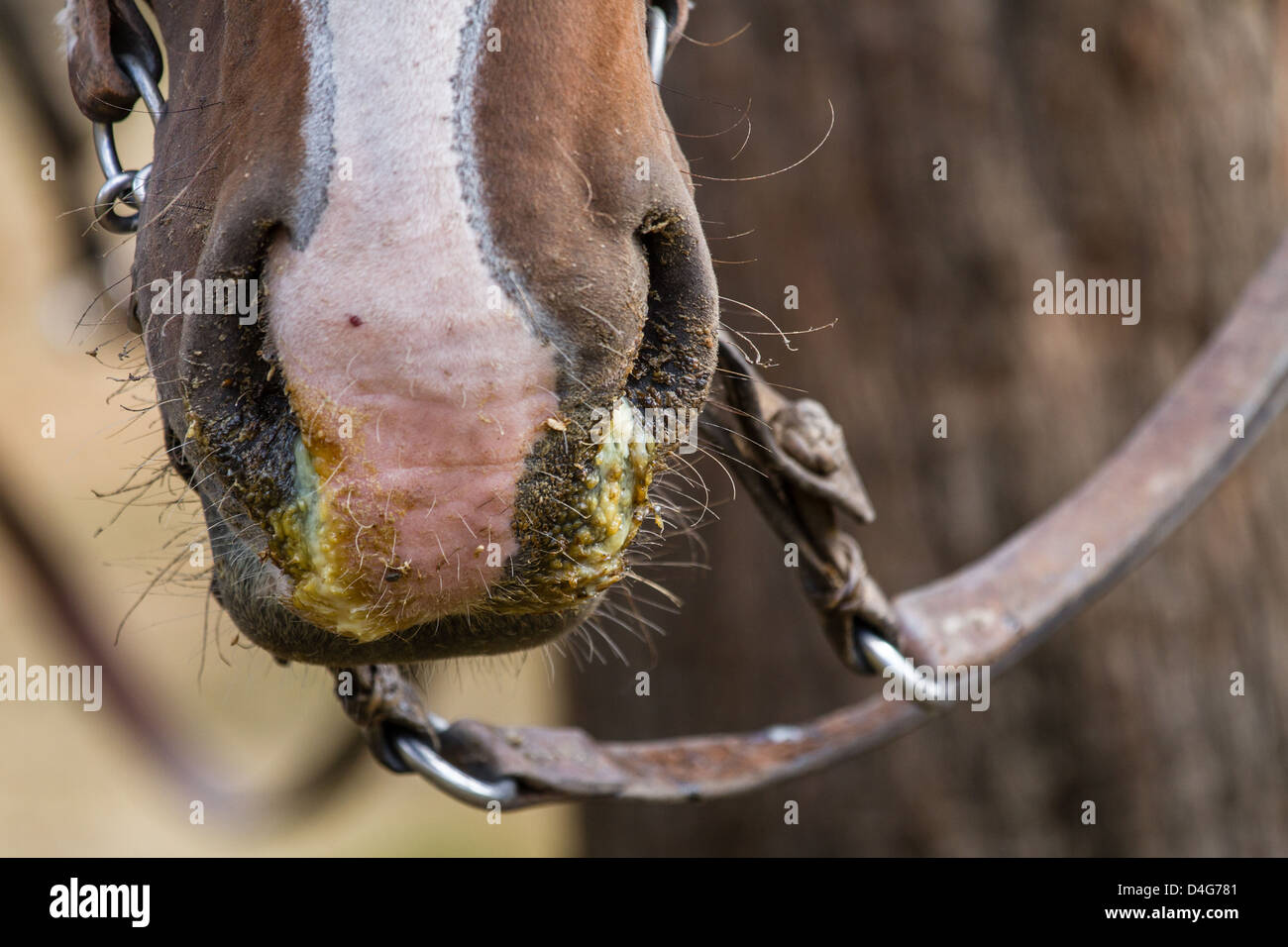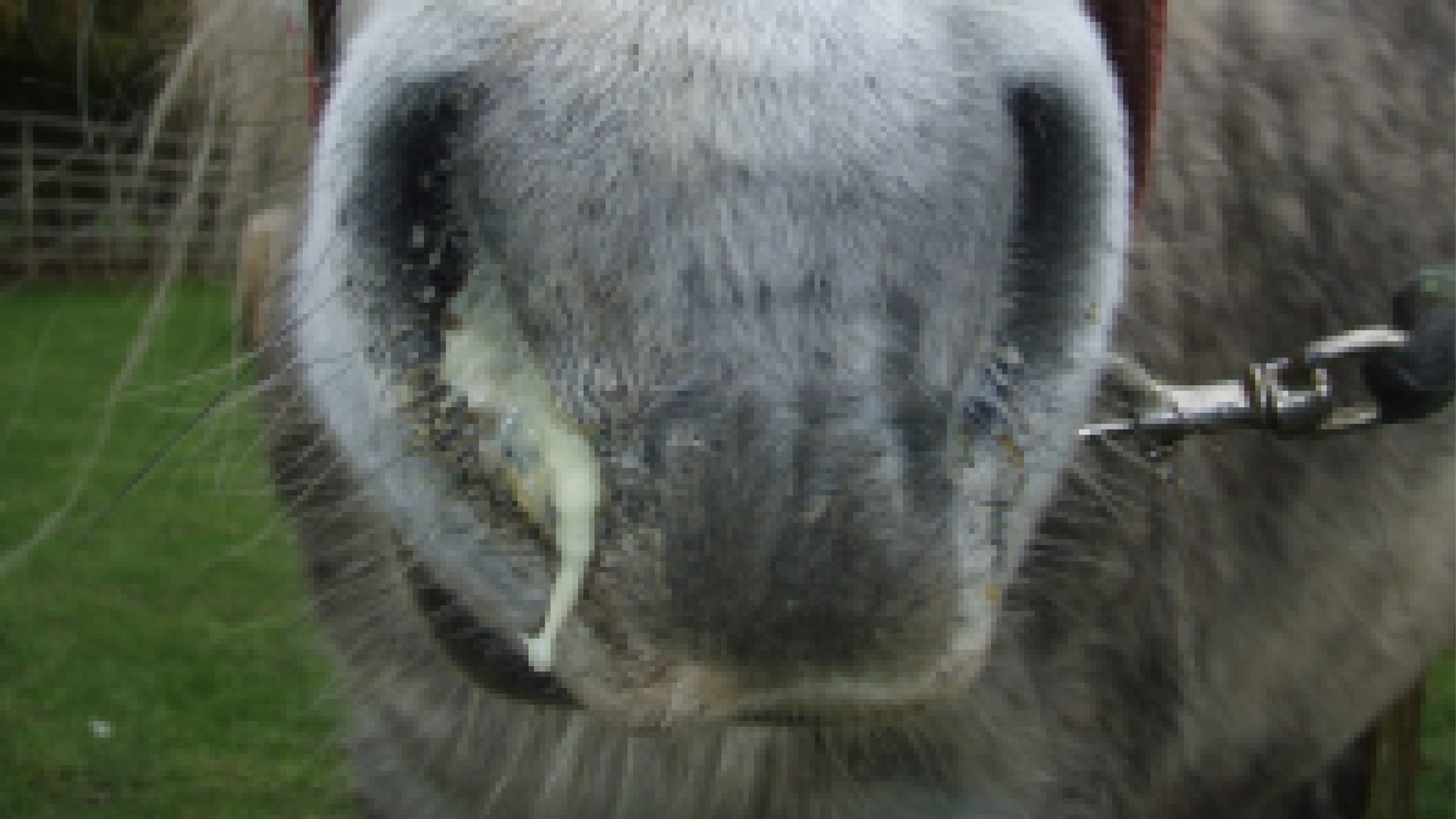Horse Nose Discharge
Horse Nose Discharge - A nasal discharge can be a good indicator of an ongoing problem within the respiratory, or occasionally the gastrointestinal system, and is. In horses, if a thick nasal discharge is seen emanating specifically from one nostril, it indicates the possibility of a sinus infection. This discharge can vary in. A runny nose in horses, also known as nasal discharge, is when fluid flows from the horse’s nostrils.
This discharge can vary in. In horses, if a thick nasal discharge is seen emanating specifically from one nostril, it indicates the possibility of a sinus infection. A nasal discharge can be a good indicator of an ongoing problem within the respiratory, or occasionally the gastrointestinal system, and is. A runny nose in horses, also known as nasal discharge, is when fluid flows from the horse’s nostrils.
A nasal discharge can be a good indicator of an ongoing problem within the respiratory, or occasionally the gastrointestinal system, and is. In horses, if a thick nasal discharge is seen emanating specifically from one nostril, it indicates the possibility of a sinus infection. A runny nose in horses, also known as nasal discharge, is when fluid flows from the horse’s nostrils. This discharge can vary in.
My horse has green nasal discharge. What should I do?
In horses, if a thick nasal discharge is seen emanating specifically from one nostril, it indicates the possibility of a sinus infection. This discharge can vary in. A nasal discharge can be a good indicator of an ongoing problem within the respiratory, or occasionally the gastrointestinal system, and is. A runny nose in horses, also known as nasal discharge, is.
Discharge From Horses Nose Should I Be Concerned?
A runny nose in horses, also known as nasal discharge, is when fluid flows from the horse’s nostrils. A nasal discharge can be a good indicator of an ongoing problem within the respiratory, or occasionally the gastrointestinal system, and is. This discharge can vary in. In horses, if a thick nasal discharge is seen emanating specifically from one nostril, it.
Nasal Discharge The Horse's Advocate
In horses, if a thick nasal discharge is seen emanating specifically from one nostril, it indicates the possibility of a sinus infection. A nasal discharge can be a good indicator of an ongoing problem within the respiratory, or occasionally the gastrointestinal system, and is. A runny nose in horses, also known as nasal discharge, is when fluid flows from the.
Horse nasal discharge hires stock photography and images Alamy
A runny nose in horses, also known as nasal discharge, is when fluid flows from the horse’s nostrils. In horses, if a thick nasal discharge is seen emanating specifically from one nostril, it indicates the possibility of a sinus infection. This discharge can vary in. A nasal discharge can be a good indicator of an ongoing problem within the respiratory,.
Equine Influenza Nasal Discharge
This discharge can vary in. In horses, if a thick nasal discharge is seen emanating specifically from one nostril, it indicates the possibility of a sinus infection. A nasal discharge can be a good indicator of an ongoing problem within the respiratory, or occasionally the gastrointestinal system, and is. A runny nose in horses, also known as nasal discharge, is.
Horse Respiratory System Nasal Discharge The Horse's Advocate
A nasal discharge can be a good indicator of an ongoing problem within the respiratory, or occasionally the gastrointestinal system, and is. A runny nose in horses, also known as nasal discharge, is when fluid flows from the horse’s nostrils. In horses, if a thick nasal discharge is seen emanating specifically from one nostril, it indicates the possibility of a.
Nose nasal discharge in horses Vetlexicon Equis from Vetlexicon
A runny nose in horses, also known as nasal discharge, is when fluid flows from the horse’s nostrils. This discharge can vary in. A nasal discharge can be a good indicator of an ongoing problem within the respiratory, or occasionally the gastrointestinal system, and is. In horses, if a thick nasal discharge is seen emanating specifically from one nostril, it.
Strangles symptoms can include nasal discharge Bransby Horses
In horses, if a thick nasal discharge is seen emanating specifically from one nostril, it indicates the possibility of a sinus infection. A runny nose in horses, also known as nasal discharge, is when fluid flows from the horse’s nostrils. A nasal discharge can be a good indicator of an ongoing problem within the respiratory, or occasionally the gastrointestinal system,.
Equine Strangles Management and Prevention EquiManagement
In horses, if a thick nasal discharge is seen emanating specifically from one nostril, it indicates the possibility of a sinus infection. A nasal discharge can be a good indicator of an ongoing problem within the respiratory, or occasionally the gastrointestinal system, and is. A runny nose in horses, also known as nasal discharge, is when fluid flows from the.
Understanding Strangles in Horses The Horse
In horses, if a thick nasal discharge is seen emanating specifically from one nostril, it indicates the possibility of a sinus infection. A runny nose in horses, also known as nasal discharge, is when fluid flows from the horse’s nostrils. A nasal discharge can be a good indicator of an ongoing problem within the respiratory, or occasionally the gastrointestinal system,.
A Nasal Discharge Can Be A Good Indicator Of An Ongoing Problem Within The Respiratory, Or Occasionally The Gastrointestinal System, And Is.
A runny nose in horses, also known as nasal discharge, is when fluid flows from the horse’s nostrils. This discharge can vary in. In horses, if a thick nasal discharge is seen emanating specifically from one nostril, it indicates the possibility of a sinus infection.








